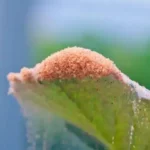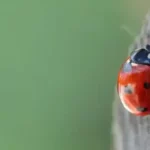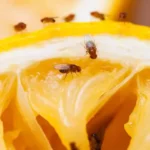If you’ve noticed your garden becoming a buffet for grasshoppers, you’re likely seeking practical solutions. The frustration of seeing your hard work and care for your plants undone by these insects can be disheartening. We understand the urgency of finding protective measures that work and are here to help you discover how to stop grasshoppers from eating plants while guiding you through some proven strategies to keep your garden safe.
To stop grasshoppers from eating your plants, you can try the following methods:
- Physical Barriers: Use row covers, netting, or screens to block grasshoppers from reaching your plants.
- Remove Weeds: Grasshoppers are attracted to weeds, so removing them from your garden can help reduce the presence of grasshoppers.
- Introduce Predators: Provide habitat and food sources to encourage natural predators of grasshoppers, such as birds, insects, and spiders.
- Natural Repellents: Use natural repellents like garlic, hot pepper spray, or vinegar spray to deter grasshoppers from feeding on your plants.
- Plant Deterrents: Planting certain herbs and flowers, such as cilantro, calendula, or marigolds, can help repel grasshoppers.
- Rotate Crops: Grasshoppers are less likely to infest areas with diverse plant species, so rotating your crops can help reduce their numbers.
- Companion Planting: Planting certain plants together can help deter pests. For example, planting basil near tomatoes can help repel grasshoppers.
- Maintain Garden Hygiene: Keep your garden clean and debris-free, as grasshoppers are attracted to areas with lots of vegetation.
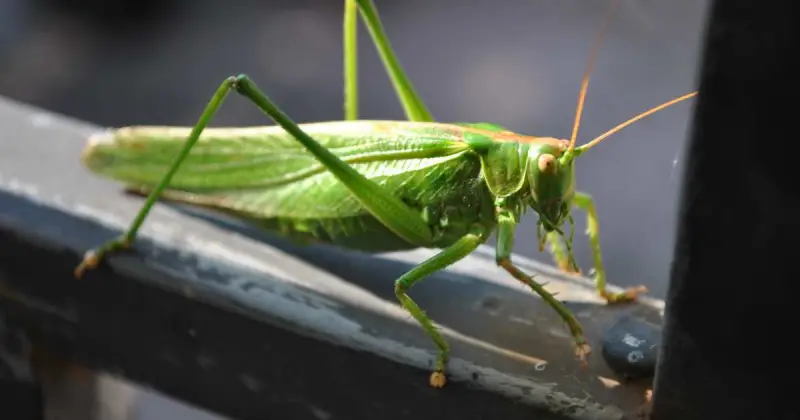
As you continue reading, you’ll discover practical and natural ways to combat grasshopper invasions. From encouraging the presence of birds and beneficial insects that prey on grasshoppers to setting up physical barriers that prevent them from reaching your plants, there are several effective strategies you can implement.
We’ll also explore how certain plants can serve as natural repellents or trap crops, drawing grasshoppers away from the central garden bursting with your prized crops. These insights aim to arm you with the knowledge needed to safeguard your plants and enjoy a thriving garden once again.
So, without further ado, let’s help you start reclaiming your turf!
Humble Highlights
- Discover how to fight back against hungry grasshoppers invading your garden with these natural and unique solutions so you can help protect your plants and ensure a healthier harvest throughout the seasons!
- Save time by strategically placing physical barriers, trap crops, and companion plants throughout your area so you can protect your green space and reduce the risk of disease transmission by grasshoppers, keeping your crops healthy.
- Save time by understanding how natural insecticide methods and soaps can help reduce the number of grasshoppers feeding in your garden so you can promote biodiversity and protect beneficial bugs and pollinators in the surrounding ecosystem.
Natural Predators And Trap Crops
To effectively manage grasshopper populations and protect your plants, employ natural predators and the strategic use of trap crops. Birds, wasps, and ground beetles are natural predators that reduce the number of grasshoppers, aiding in controlling their presence in gardens.

Trap crops, such as marigolds, calendula, sunflowers, aster, alyssum, or dill, serve as alternative targets for grasshoppers, diverting them from primary crops. 1
These trap plants function as decoys, drawing grasshoppers away from your primary vegetables or flowers. Positioning trap crops throughout your space or as a perimeter around your garden can significantly decrease the damage inflicted by grasshoppers.
This approach fosters a balanced ecosystem in your garden, safeguarding your plants while effectively managing grasshopper invasions. It is used in conjunction with the introduction of natural predators.
Trap crops also serve as a habitat for beneficial insects. While the primary purpose of trap crops is to attract and divert pests away from valuable plants, they can also provide food and shelter for beneficial insects such as pollinators and natural predators.
By incorporating trap crops into a garden or farm, it is possible to not only manage pest populations, like grasshoppers, but also support a diverse and healthy ecosystem that promotes overall plant health.
Physical Barriers And Companion Planting
Employing physical barriers such as row covers or netting is highly fruitful and cost-effective to protect your plants from grasshoppers. Companion planting with herbs, including cilantro and dill, serves as an additional strategy to deter these pests.
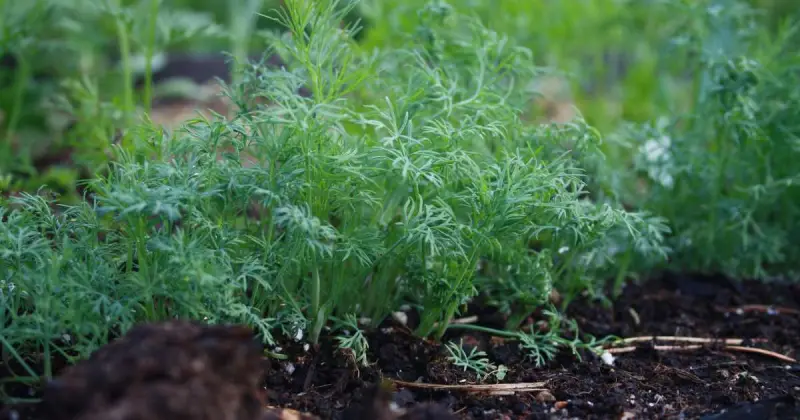
Plant Barriers Strategically
To effectively utilize plant barriers against grasshoppers, consider using physical barriers such as row covers or mesh netting. These protect your plants as a shield against encroaching grasshoppers and their subsequent damage.
Affordable companion crops like cilantro, dill, or marigolds can also repel these hungry pests. In fact, the practice of companion planting adds aesthetic value to your garden while acting as a functional solution to confusing and repelling grasshoppers. 2
Moreover, applying a barrier of diatomaceous earth around your plants can serve as an effective deterrent. This natural substance discourages grasshoppers from approaching your crops.
Diatomaceous earth (DE) is a naturally occurring, soft, siliceous sedimentary rock that easily crumbles into a delicate white to off-white powder. It comprises the fossilized remains of diatoms, a type of hard-shelled algae. These diatoms have a high silica content, which gives diatomaceous earth its abrasive texture.
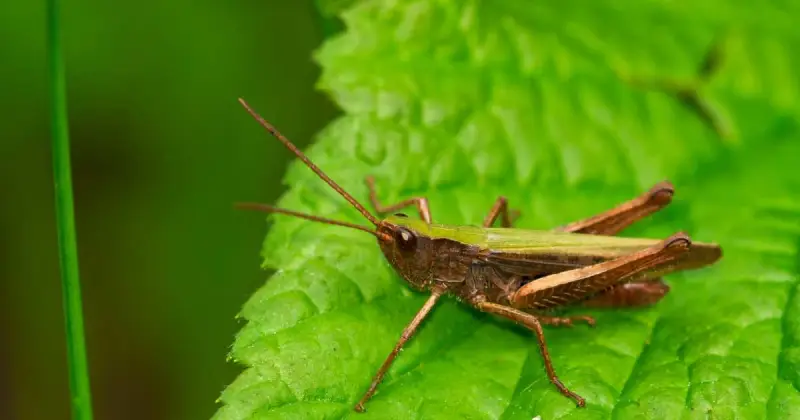
Use Companion Plants
Incorporating companion plants in your garden is an effective strategy to deter grasshoppers and safeguard your plants. Here are three methods through which companion plants can contribute to repelling grasshoppers:
- Disorientation Strategies: Introducing plants such as cilantro and dill can disorient grasshoppers, complicating their search for your valued garden species.
- Natural Obstructions: These plants serve as physical deterrents, creating hurdles preventing grasshoppers from accessing and consuming susceptible crops.
- Deterring Aromas: Various herbs, including cilantro and dill, produce odors that grasshoppers find unappealing, reducing the likelihood of these insects damaging your garden.
Diatomaceous Earth And Herbal Protection
Diatomaceous earth (DE) is a natural material that serves as an effective barrier, deterring grasshoppers from damaging the garden. Its effectiveness in curbing grasshoppers is due to its ability to dehydrate the insects’ exoskeletons. Additionally, herbs such as cilantro, dill, and marigolds provide added defense. These plants emit odors that grasshoppers find unappealing, thus offering protection without the need for synthetic pesticides. Combining diatomaceous earth with these herbs forms an efficient shield against grasshopper invasions, ensuring the garden’s prosperity.
| Diatomaceous Earth | Herbal Defense |
|---|---|
| Dehydrates insects | Emits deterring odors |
| Affects exoskeletons | Includes cilantro, dill, marigolds |
| Acts as a deterrent | Safeguards flora organically |
To use DE for pest control, sprinkle a thin layer of the powder on the soil around your plants or directly on the foliage, being careful not to get it on beneficial insects.
Reapply the DE after rain or watering, as it can become ineffective when wet. DE works best when dry, so it is important to reapply it regularly in areas where pests are active.
One of the benefits of using DE for pest control is that it is safe for humans, pets, and beneficial insects when used correctly. However, it is vital to use food-grade DE and to follow the manufacturer’s instructions carefully to avoid inhalation or skin irritation. DE can also be effective against a variety of other pests, making it a versatile and environmentally friendly option for pest control in the garden. 3
Diatomaceous earth (DE) is a natural and effective pest control method for managing various garden pests, including grasshoppers. DE is made from the fossilized remains of diatoms, a type of algae, and is composed of sharp, microscopic particles that can pierce the exoskeletons of insects and other pests, causing them to dehydrate and die. Check out the video below that explains how DE can fight against garden pests.
Insecticidal Soaps And Pyrethrin
Insecticidal soaps and Pyrethrin kill grasshoppers by disrupting their cell membranes and causing suffocation. Pyrethrin, extracted from chrysanthemum flowers, rapidly paralyzes these insects by targeting their nervous systems. Pyrethrin disrupts the normal function of insect nerve cells by prolonging the opening of sodium channels, leading to repetitive nerve impulses. This hyperexcitation eventually paralyzes the insects, leading to their death.
Soap For Grasshoppers
To protect plants from grasshoppers, insecticidal soaps and Pyrethrin-based sprays are highly effective. These methods are eco-friendly and offer a safer alternative to synthetic pesticides. Here’s why they’re recommended:
- Direct Impact: Insecticidal soaps work by directly attacking grasshoppers, causing them to suffocate and dehydrate upon contact. This method effectively prevents them from harming plants.
- Derived from Nature: Pyrethrin, obtained from chrysanthemum flowers, is a natural insecticide that targets grasshoppers efficiently while being less damaging to the environment. 4
- Selective Effectiveness: These soaps have a minimal impact on beneficial insects such as bees and ladybugs. This selectivity helps maintain ecological balance by safeguarding your garden’s allies from unintended harm.
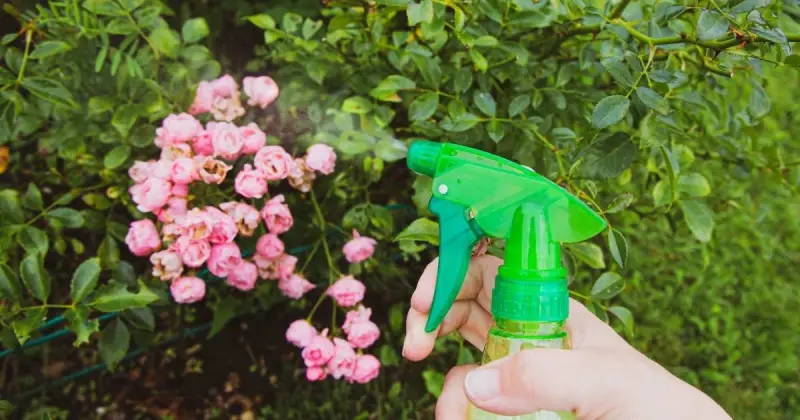
Pyrethrin As Deterrent
Using Pyrethrin-based insecticides is an effective method of preventing grasshoppers from damaging plants. As previously mentioned, Pyrethrin disrupts the nervous system of grasshoppers, leading to paralysis and death. This natural insecticide is safe for garden use and doesn’t leave harmful residues on vegetation like other, more harsh chemical applications might.
Applying Pyrethrin regularly is advisable to protect your plants from these insects. For proper application guidance, consult local experts or agricultural extension services in your local area. Pyrethrin offers a reliable solution for controlling grasshopper populations, helping to maintain the health and vitality of your garden.
Pyrethrin is considered a contact insecticide, meaning that it must come into direct contact with the insect to be effective. It is often used as a spray, which can be applied directly to plants where grasshoppers are present.
Pyrethrin is fast-acting and breaks down quickly in the environment, making it a popular choice for organic gardening. However, to ensure effective and safe application, it is important to follow label instructions carefully when using Pyrethrin products.
Application Tips
To effectively manage grasshopper populations in gardens using insecticidal soaps and Pyrethrin, adhere to the following strategies:
- Complete Coverage: Ensure the insecticidal soaps reach the leaves’ top and bottom surfaces. This approach is crucial as grasshoppers feed on these areas, and the soap needs to make contact to be effective.
- Targeted Application: Spray Pyrethrin-based insecticides directly onto the grasshoppers or areas where they’re known to feed. This method helps to disrupt their nervous system quickly.
- Expert Consultation: For tailored advice on the optimal times and intervals for application to control grasshopper infestations efficiently, contacting local agricultural extension services is recommended.
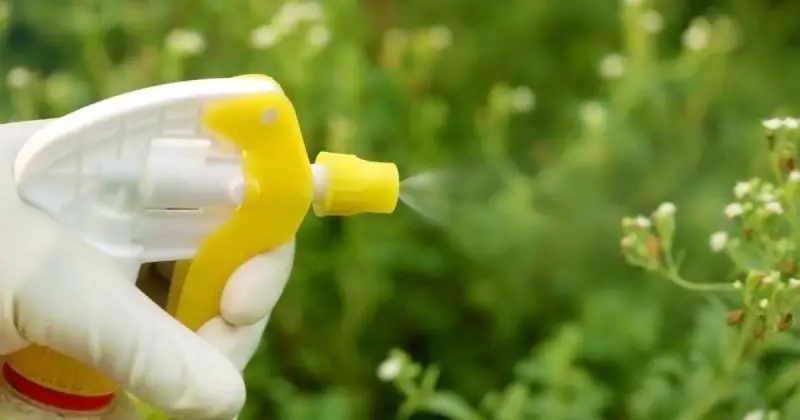
Neem Oil And Carbaryl Application
Using Neem oil and carbaryl on plants offers an effective strategy to prevent and manage grasshopper infestations. Neem oil, sourced from the Neem tree, is a natural repellant with minimal harm to beneficial insects. Conversely, carbaryl, a synthetic insecticide, effectively eliminates grasshoppers by interfering with their nervous system. Both treatments ensure plant protection against grasshopper damage, promoting a thriving garden environment.
This approach presents a dual-action strategy, utilizing the repellent properties of Neem oil and carbaryl’s lethal effects to ensure comprehensive plant protection. 5
For clarity on the advantages of using Neem oil and carbaryl, consider the following comparison:
| Features | Neem Oil | Carbaryl |
|---|---|---|
| Type | Natural repellant | Synthetic insecticide |
| Toxicity | Minimal harm to helpful insects | Moderate toxicity, requires cautious handling |
| Target Pest | Deters a variety of pests including grasshoppers | Specifically targets grasshoppers |
| Application | Direct application to foliage | Direct application to foliage |
| Effectiveness | Deters grasshoppers | Eliminates grasshopper populations |
Malathion Usage And Agricultural Guidance
Applying malathion following proper agricultural practices is essential to control grasshopper populations in agricultural areas. Incorporating malathion into your pest control strategy can be effective when used correctly. Here are important considerations for using malathion in farming environments:
- Impact on Beneficial Insects: Malathion is a chemical pesticide, and its use could affect helpful insects that help control pests. It’s crucial to apply malathion in a manner that reduces its adverse effects on these beneficial species. 6
- Alternative Methods: Alongside malathion applications, employing Nolo Bait as a biological control can offer an effective strategy. Nolo Bait targets grasshoppers by using a pathogen that infects and eliminates them, serving as an additional or alternative method to chemical pesticides.
- Expert Advice: Consulting with local agricultural experts or extension services is advisable for detailed advice on malathion’s proper application and dosage for grasshopper management. They can offer insights specific to your region and crops, ensuring malathion’s use is both safe and productive.
While malathion is effective against many pests, including grasshoppers, it is also toxic to beneficial insects such as bees, ladybugs, and parasitic wasps. These insects play a crucial role in pollination and natural pest control, and the use of malathion can negatively affect their populations.
Use malathion sparingly and according to label instructions to mitigate the impact on beneficial insects. It is also advisable to avoid spraying malathion when beneficial insects are most active, such as early in the morning or late in the evening.
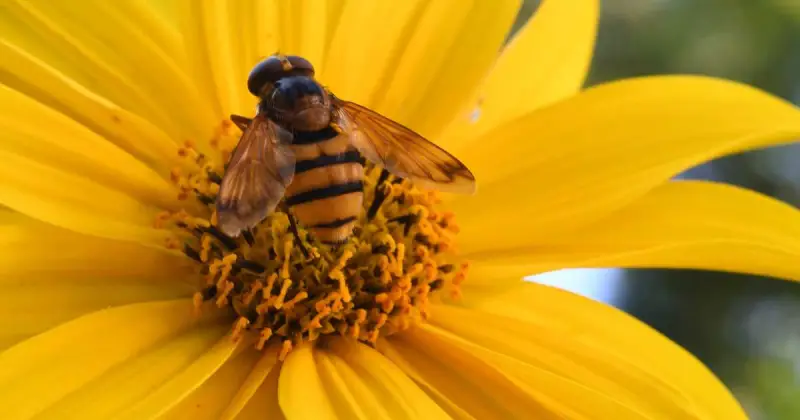
Preventive Measures And Habitat Management
Effective management practices are crucial for mitigating grasshopper invasions and safeguarding the health of crops in agricultural areas. Eliminating preferred grasshopper environments adjacent to gardens, like dense grass and weeds, is vital. Additionally, maintaining an area free of weeds minimizes shelters and breeding sites for these insects.
Implementing crop rotation disrupts their feeding habits, contributing to reduced damage to vegetation. To address infestations swiftly, it’s important to monitor gardens for early indicators of grasshopper activity, such as foliage with bite marks. Moreover, enhancing soil health supports plant defense against grasshoppers and improves garden vitality. 7
Conclusion
Defending your garden from grasshopper invasions requires a proactive approach involving blending natural predators, barriers, and safe insecticides. Implementing these strategies can help protect your garden, ensuring a healthy and vibrant environment undisturbed by hungry grasshoppers.
It’s understandable how frustrating it can be to see your hard work destroyed by grasshoppers, but with these measures, you can maintain a lush, thriving garden. Let this be a reminder that every effort you make contributes significantly to the well-being of your green oasis.
Have you tried one of these effective methods to reduce and control swelling grasshopper numbers in your backyard garden? Perhaps you used something else entirely. We want to know what steps you took toward your success. Leave a comment below and let us know all about your achievement!
SOURCES
- Texas A&M University – Grasshoppers And Their Control
- Springer – Grasshoppers And Locusts As Agricultural Pests
- National Pesticide Information Center – Diatomaceous Earth Fact Sheet
- Wikipedia – Pyrethrin
- University Of New Hampshire – What Should Neem Be Used For On Plants?
- Wikipedia – Malathion
- National Library Of Medicine, National Center For Biotechnology Information – Pollinator Diversity Benefits Natural And Agricultural Ecosystems, Environmental Health, And Human Welfare

